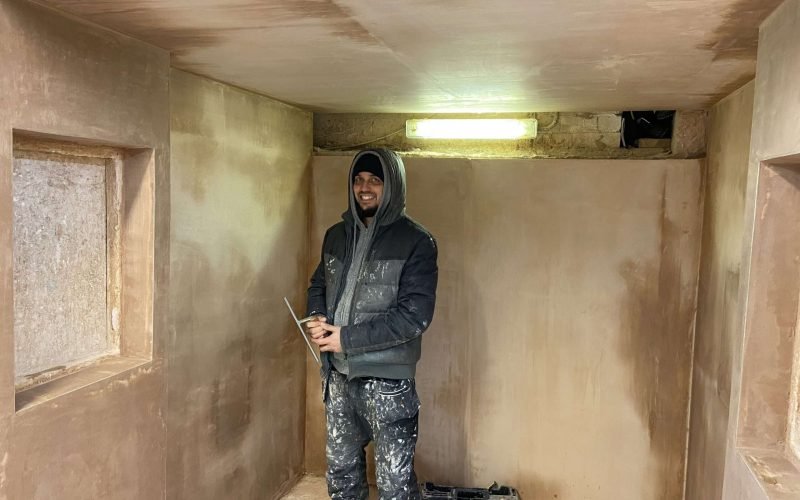Plastering Advice from Professionals: Finest Practices for Success
Plastering Advice from Professionals: Finest Practices for Success
Blog Article
Comprehending the Crucial Techniques of Gluing for Home Renovation Projects
In the world of home enhancement, understanding the important methods of gluing can substantially enhance both the capability and visual allure of a space. Numerous methods exist, each tailored to certain applications, whether for restoring historic honesty or modernizing insides. The smudging process includes vital stages, from thorough surface area preparation to the precise application of materials. Recognizing these foundational components is crucial, yet many house owners neglect usual challenges that can threaten their efforts. As we explore these methods better, the nuances of attaining a perfect coating will certainly become increasingly evident.
Sorts Of Smudging Techniques
Although numerous plastering methods exist, each offers a distinct objective and supplies unique visual qualities. Among one of the most usual methods is typical lime plastering, which is understood for its breathability and versatility. This strategy is particularly useful for older structures, allowing wetness to escape while maintaining architectural integrity.
For an extra textured look, trowel-on plastering techniques such as stucco and Venetian plaster are often used. Stucco, typically utilized in outsides, provides durability and weather condition resistance, while Venetian plaster is renowned for its lavish, refined surface.
Furthermore, there are much more specialized strategies, such as skimming, which is a procedure that includes using a slim layer of plaster over existing surfaces to create a smooth finish. Each of these techniques can substantially affect the overall visual and capability of an area, making it important to pick the ideal approach based upon the certain demands of a project.

Devices and Products Needed

Necessary devices and products are important for effective plastering, making sure both performance and top quality in the application procedure. A thorough plastering toolkit generally consists of a hawk, trowels, and a float. The hawk serves as a system to hold the plaster, while the trowels, readily available in numerous dimensions, are vital for application and smoothing. A float, often constructed from rubber or sponge, is made use of to attain a consistent coating.

Spending in top quality devices and products inevitably contributes to an extra effective gluing task, generating a sturdy and visually pleasing coating. Properly furnished, you lay the foundation for reliable plastering and home enhancement.
Step-by-Step Plastering Process
With the right tools and materials in hand, the following phase includes executing the gluing procedure with precision. Begin by preparing the surface to ensure ideal adhesion. Remove any kind of Click Here loose debris, dirt, or old plaster, and apply a bonding representative if required.
As soon as the surface is prepped, mix the plaster according to the supplier's instructions, attaining a smooth, lump-free consistency. Making use of a trowel, use the first layer, referred to as the scratch layer, to a density of about 5-10 mm. Make certain uniform protection, and utilize a comb or scratcher to develop grooves for better attachment of succeeding layers.
After permitting the scrape coat to set partly, use the 2nd coat, or the brown coat, smoothing it out for an even surface. Use the completing layer, which must be thinner and smoother.
When the plaster has actually dried completely, it can be sanded lightly to remove flaws. Comply with up with a guide before painting for a refined last look.
Typical Errors to Prevent
Stopping working to acknowledge common mistakes can dramatically impact the quality of your plastering task. One regular error is insufficient surface preparation. Stopping working to clean and prime the surface area see this site can result in bad bond, leading to fractures and peeling. Furthermore, ignoring to fix any type of underlying issues, such as wetness or architectural damage, can jeopardize the plaster's integrity.

Timing is likewise vital; numerous inexperienced plasterers rush the application. Permitting the initial layer to dry completely before using subsequent layers is vital to prevent excessive fracturing and shrinkage.
In enhancement, not using the right tools can prevent the finishing procedure. Making use of trowels that are as well huge or small can impact your control and the smoothness of the surface.
Tips for Finishing Touches
Attaining a flawless surface in this plastering calls for attention to information and a couple of calculated strategies. When the first application has dried, start the finishing process by utilizing a damp sponge or trowel to smooth out any type of imperfections. This step not just boosts the surface area but also aids to get rid of any excess plaster that may have dried out erratically.
Following, consider making use of a fine-grit sanding block or post sander for an extra sleek look. Sanding need to be done carefully to prevent damaging the underlying layer - Plastering. Constantly wear a mask to shield against dirt inhalation
After fining sand, evaluate the surface area under different lighting conditions to recognize any missed variances or places. Use a slim layer of ending up plaster if necessary, feathering out the edges to blend effortlessly with the bordering area.
Conclusion
In verdict, understanding vital plastering strategies significantly boosts the quality of home enhancement projects. Comprehending the various types of gluing methods, utilizing appropriate devices and materials, and adhering to an organized application process add to accomplishing a durable and smooth surface.
In the world of home improvement, grasping the important methods of plastering can substantially improve both the capability and aesthetic charm of a space.Although numerous smudging methods exist, each offers an unique function and offers distinctive visual qualities. Plastering. For a much more textured look, trowel-on plastering strategies such as stucco and Venetian plaster are often utilized. Stucco, generally made use of in exteriors, provides sturdiness and climate resistance, while Venetian plaster is renowned for its luxurious, refined surface
Frequently made use of plaster kinds consist of gypsum plaster, lime plaster, and cement-based plaster, each offering various objectives and settings.
Report this page